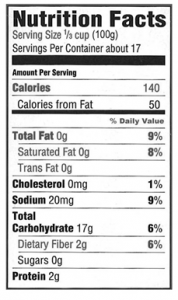- Slow down when you eat
- Stop eating before you are full
- Be picky
- Try to think of your body as a working machine
- Keep track of the food that you eat
- Avoid Temptation
- Stick to the basics
Slow down when you eat. Be aware of what and why you are eating. If you eat too fast, you will miss your body’s signals that it is full.
Stop eating before you are full. You do not need to eat to maximum capacity in order to be full. Our bodies require 15-20 minutes in order to fully register feelings of fullness. Take your time.
Be picky. You don’t have to eat everything that is in front of you. Choose the things that are worth eating.
Try to think of your body as a working machine. Which foods will serve as the best fuel to keep your body healthy and functioning?
Keep track of the food that you eat. If you eat dessert at lunch, skip it at dinner. If you have a hamburger and French fries at one meal, choose more whole grains, fruits, and veggies at following meals. Eating healthy can be a balancing act.
Get acquainted with Food Labels
Many people ignore the Nutrition Facts label because it has too much information. However, Food labels have some key points that can help you choose and compare healthier options.
calories = the amount of energy in food
g = grams
mg = milligrams
Serving size: is designed to make it easy to compare foods. It is shown in cups or pieces, followed by the metric amount (g). Calories and nutrients on the label are based on serving size.
Calories: provide a measure of how much energy you get from a serving of food. The number of servings you eat determines the number of calories you consume.
% daily value: helps you figure out what percent of the daily recommendation for key nutrients (based on a 2000 calorie diet) a serving of food contains. Use the % daily values to help you get an idea of how food fits into a daily meal plan.
total fat: represents all types of fat contained in the food. Foods with 3 g or less per serving are low-fat foods and foods with more than 10 g or more are considered high fat. If there is less than 1 g per serving then the amount is listed as 0 g but the actual amount is reflected in the % daily values. 5% or less of total fat ( in the % daily value column) is a good indication that the food is low in fat.
Saturated fat: can increase your cholesterol. Aim for 1 g or less per serving or about 16-20 g per day.
Trans-fats: raise the “bad cholesterol” (LDL) that increases your risk of coronary heart disease. Health experts recommend that you choose foods with the lowest possible amount of trans-fat (ideally no trans-fat).
Dietary Fiber: is included in the grams of total carbohydrate. A high fiber food has 5 or more grams. The amount recommended per day is 25 g.




Recent Comments